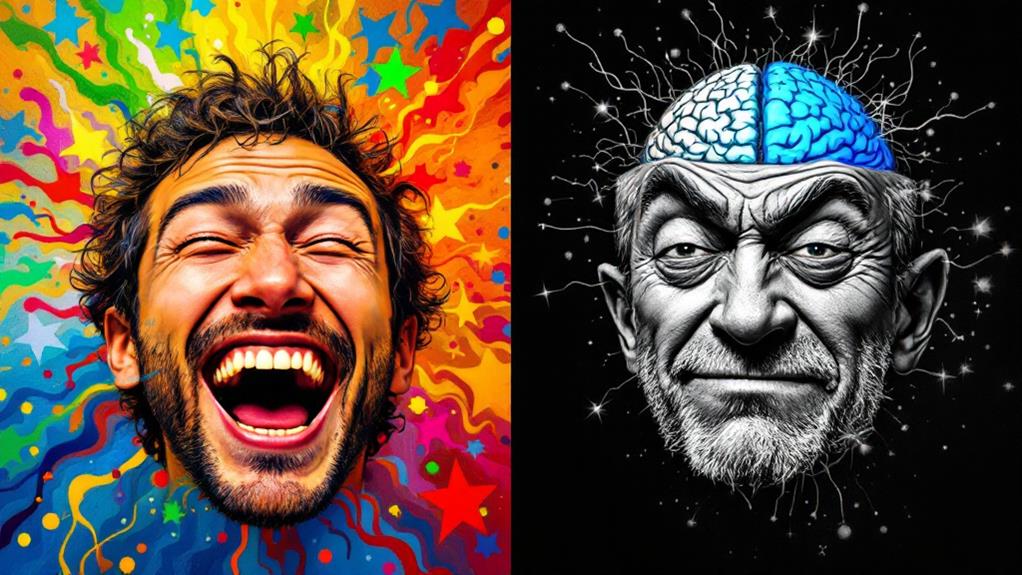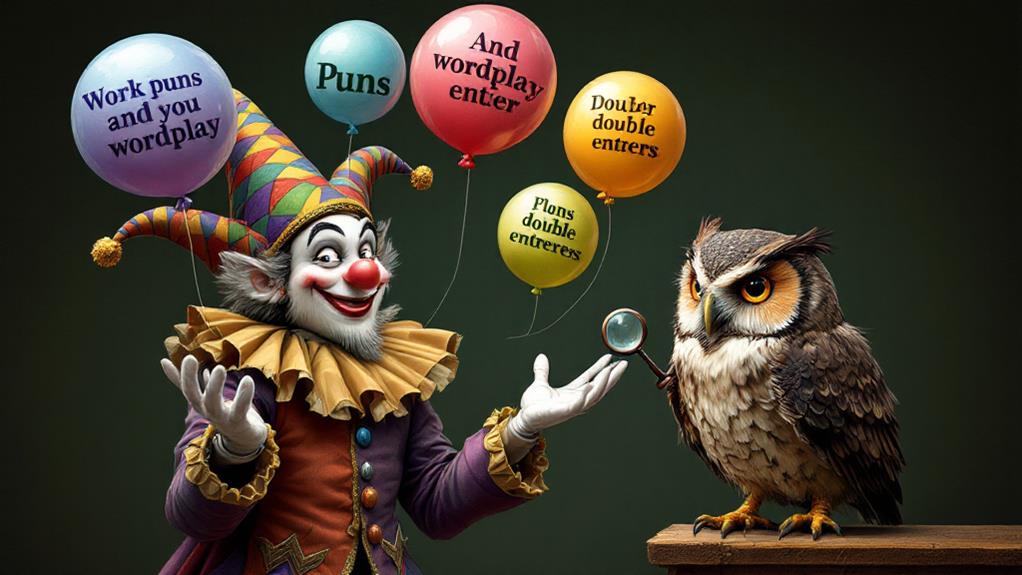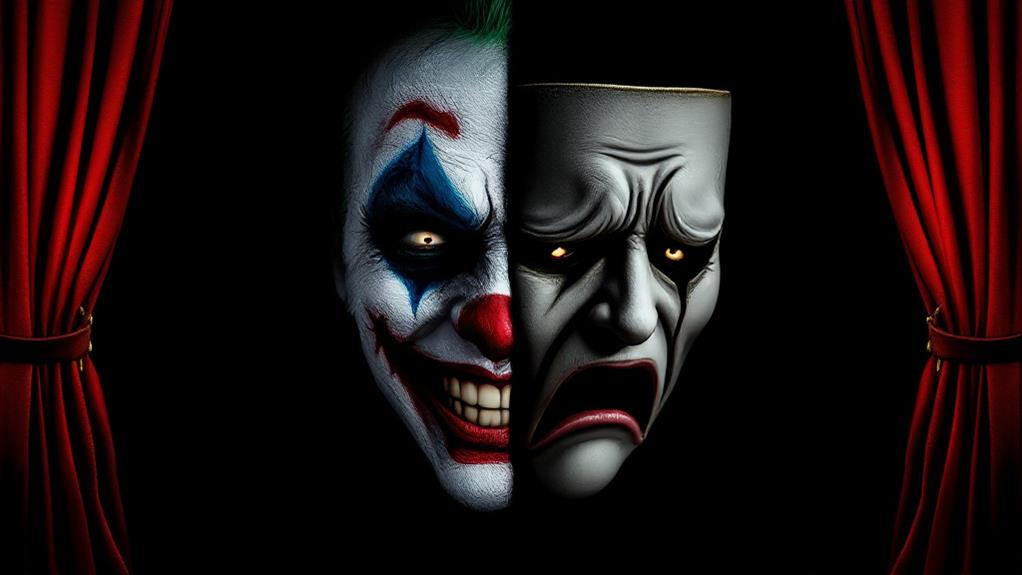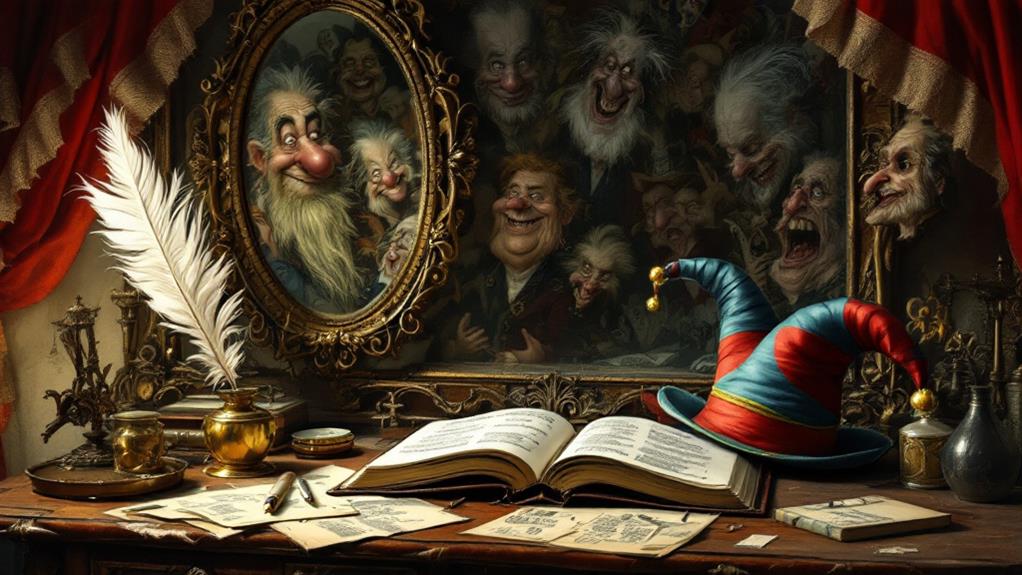What Is the Difference Between Funny and Witty?

Funny and witty are distinct types of humor. Funny content aims to provoke immediate laughter through physical comedy, exaggeration, or situational humor. It's more universally accessible and relies on instinctive responses. Witty humor, on the other hand, is characterized by verbal precision and intellectual appeal. It involves clever wordplay, sharp observations, and quick thinking, often requiring cultural knowledge to appreciate fully. Funny humor tends to use simpler linguistic techniques, while witty humor employs more sophisticated rhetorical devices. Understanding these differences can help you recognize and appreciate various forms of comedic expression in your daily life.
Defining Funny and Witty

When it comes to humor, understanding the distinction between "funny" and "witty" is essential. While both elicit laughter, they differ in their approach and execution.
Funny is a broad term that encompasses anything that amuses or makes you laugh. It's often more direct and easily accessible, relying on physical comedy, exaggeration, or situational humor. Funny content can range from slapstick to absurdist humor, and it typically aims to provoke an immediate, emotional response. It's the kind of humor that makes you burst out laughing without much thought.
Witty, on the other hand, is characterized by its verbal precision and intellectual appeal. It involves clever wordplay, sharp observations, and quick thinking. Witty humor often requires more mental engagement from the audience, as it relies on subtle implications and cultural references. It's the type of humor that makes you chuckle and think, "That's clever!"
While funny content focuses on emotional resonance and instant gratification, witty humor emphasizes cleverness and mental stimulation. Both forms of humor have their place and can be equally enjoyable, depending on the setting and audience preferences.
Delivery and Timing
The execution of humor plays a significant role in distinguishing funny from witty content. When you're aiming for funny, comedic timing is essential. You'll want to build up to the punchline, creating anticipation in your audience. The element of surprise often comes into play here, as you deliver the unexpected twist that elicits laughter.
Witty humor, on the other hand, relies more on quick, sharp delivery. It's about seizing the moment and responding with clever remarks or observations. You don't necessarily need to set up a long joke; instead, you're looking for opportunities to inject intelligent humor into conversations or situations.
Funny content often benefits from physical comedy or exaggerated delivery, while witty humor tends to be more understated and dry. You'll find that funny jokes might require practice to perfect the timing, whereas witty comments often come spontaneously. Both styles can incorporate the element of surprise, but witty humor typically does so in a more subtle, intellectual manner. Ultimately, honing the delivery and timing of both funny and witty content will heighten your humor game.
Intellectual vs. Instinctive Responses

Distinguishing between intellectual and instinctive responses is crucial when comparing witty and funny humor. Witty remarks often stem from a more cerebral place, requiring quick thinking and a sharp mind. You'll find that witty individuals excel at wordplay, clever observations, and spontaneous quips that showcase their intellect and knowledge.
On the other hand, funny humor tends to evoke a more instinctive, gut-level response. It's the kind of humor that makes you laugh without necessarily engaging your higher cognitive functions. You might find yourself chuckling at physical comedy, slapstick, or absurd situations without fully analyzing why they're amusing.
Witty humor often appeals to those who appreciate mental stimulation and enjoy decoding complex jokes or references. It's a form of humor that can make you feel clever for understanding it. Funny humor, however, is more universally accessible and relies on an innate perceptiveness of what makes people laugh.
While both types of humor can be enjoyable, witty humor typically requires more mental effort to appreciate, while funny humor aims for an immediate, visceral reaction.
Cultural Context and Relevance
Within the domain of humor, cultural setting and significance play a substantial role in distinguishing between amusing and clever. What's considered funny in one culture might be viewed as witty in another, or vice versa. This distinction often hinges on societal norms and expectations.
You'll find that cultural shifts can dramatically alter perceptions of humor. What was once considered witty may become merely funny as society evolves, or it might lose its humor altogether. Conversely, something previously seen as just amusing might gain depth and be reinterpreted as wit.
Understanding cultural context is vital when differentiating between funny and witty. Wit often requires a deeper knowledge of cultural references, current events, or historical contexts. It's intellectual humor that resonates with those who share similar cultural backgrounds or education levels. Funny, on the other hand, can be more universal, relying on physical comedy or situational humor that transcends cultural boundaries.
Linguistic Devices in Humor

Linguistic devices form the backbone of both funny and witty humor, but they're employed differently in each case. In funny humor, you'll often find simpler linguistic techniques like puns, exaggeration, and slapstick. These devices aim to elicit immediate laughter through easily understood wordplay or visual gags.
Witty humor, on the other hand, relies on more sophisticated rhetorical techniques. You'll encounter devices like irony, satire, and double entendres. These require a higher level of linguistic creativity and often demand more from the audience with regards to interpretation and understanding.
When you're crafting witty humor, you're likely to use wordplay that involves multiple layers of meaning. You might employ allusions, metaphors, or subtle references that reward attentive listeners. In contrast, funny humor tends to be more direct and accessible, using devices like repetition or absurdity to generate laughs.
Both types of humor can benefit from timing and delivery, but witty humor often requires precise pacing to allow the audience to process the cleverness of the linguistic devices utilized.
Psychological Impact on Audience
While both funny and witty humor can evoke positive emotions, they affect audiences differently on a psychological level. Funny humor often elicits an immediate, visceral response, triggering laughter and joy. It's typically more accessible and requires less cognitive processing, allowing you to enjoy the moment without much mental effort.
Witty humor, on the other hand, engages your mind more deeply. It challenges you to think critically and make connections, often resulting in a delayed but more satisfying "aha" moment. This type of humor can cultivate your self-esteem when you understand the cleverness behind it, leading to a sense of intellectual accomplishment.
The emotional engagement also differs between the two. Funny humor tends to create a shared experience, strengthening social bonds through collective laughter. Witty humor, however, may create a more exclusive connection between those who "get it," potentially leaving others feeling left out.
Your personality and preferences play a role in how you respond to each type of humor. Some people find greater enjoyment in the instant gratification of funny humor, while others prefer the mental stimulation of wit.
Famous Examples in Media
Popular media often showcases excellent examples of both funny and witty humor. You'll find that sitcoms like "Friends" and "The Office" frequently employ comedic character archetypes to generate laughs through slapstick and situational comedy. Joey Tribbiani's dimwitted antics in "Friends" exemplify classic comical humor, while Chandler Bing's sarcastic quips represent wit.
In contrast, shows like "Veep" and "The Daily Show" excel at witty humor through parody and satire. These programs use clever wordplay and biting commentary to critique political and social issues. You'll notice that their humor often requires a deeper understanding of current events and cultural allusions.
Movies offer another rich source of examples. While slapstick comedies like "Dumb and Dumber" rely on physical gags and absurd situations for laughs, films like "The Grand Budapest Hotel" showcase witty dialogue and subtle cultural references. Stand-up comedy also highlights this distinction, with performers like Jim Carrey embodying comical physical comedy, while George Carlin's routines demonstrate sharp, witty social commentary. By examining these famous examples, you can better appreciate the nuances between comical and witty humor in media.




